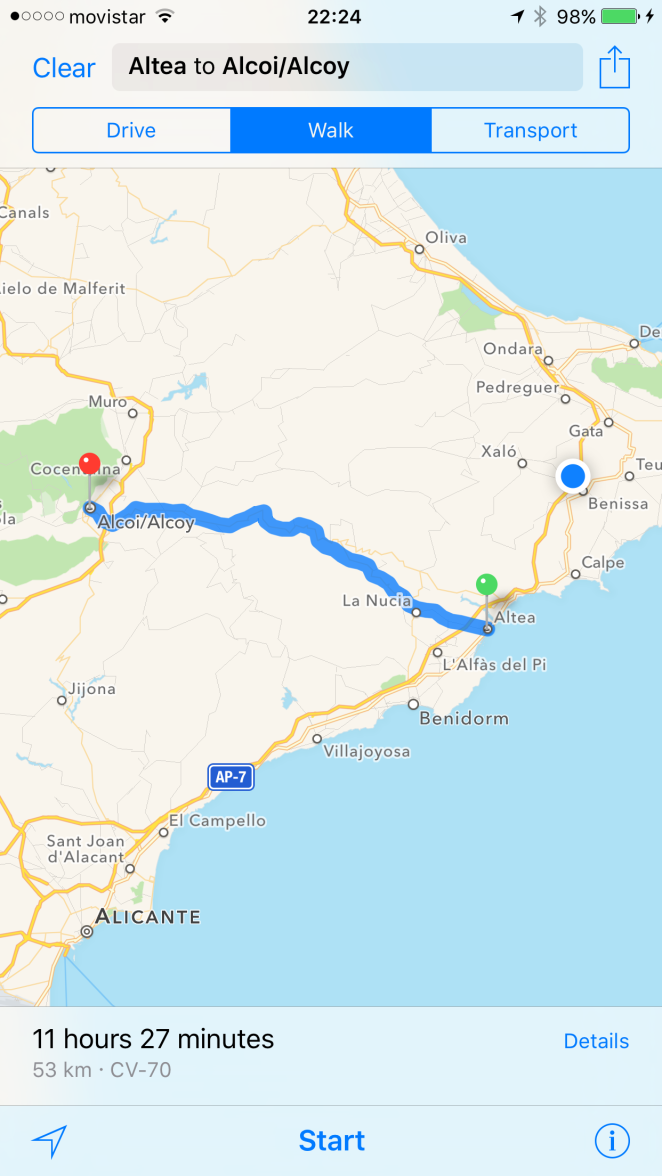I’ve already recounted the “why we decamped to Alcoy” story to you, this post tells the narrative of “how”.
And so it came to pass that DHG and your scribe took the (winding) road to Alcoy. WOW ! What a spectacular drive it is along the narrow roads high above the valleys of the Algar & Guadalest rivers. Having said that, most rivers here on the northern Costa B look as if they dried up centuries ago. Quite a few are now parks. I digress.
We passed acres of what looked like citrus fruit trees which were covered in what seemed to be heavy duty netting. There are orange groves all over this part of Spain and none of those trees are covered in any way. Odd.
We arrived at Guadelest. The photos speak for themselves. It’s spectacular. There is supposed to be a boat trip on the lake, but it didn’t look like it was operating, to us. Water level too low ? It has to be said that it was the first time in our holiday that we had come across shops selling tacky souvenirs. Each to his own.  What we also noted was that honey and nisperos ( also known as loquats and Japanese medlars ) were being sold. Could this relate to the ‘citrus trees’ we had seen ?
What we also noted was that honey and nisperos ( also known as loquats and Japanese medlars ) were being sold. Could this relate to the ‘citrus trees’ we had seen ?

We’ll never be sure but Google informed me that birds are very fond of nisperos and that the Guadalest valley is unique in its production of them. Dare we join the dots ?
We progressed to Alcoy crossing several valleys at their heads. Alcoy is known as the city of bridges. It seems that the city is built on two sides of a spectacular gorge. The old town is on one side ( with the Town Hall ) and I suspect that when the bridge across the ( very deep! ) gorge was built the town expanded on the other side.
We stayed in an excellent budget hotel ( which afforded us a fabulous view of one of the magnificent bridges from our bedrooms ) and ate a fine tapas supper on the pavement at the side of the town hall ( L’autentic is the establishment’s name ) It is not often that a hotel that looks shabby on the outside has pristine rooms.
This trip delivered on all fronts .
PS. RHS types will be interested to know that the Medlar found in the UK is Mespilus Germanica and the fruits are a slightly different colour.


Great account of an interesting trip 👍
LikeLike
Níspero japonés. We had one in our garden in northen Spain that had been grafted onto a quince. It still produces many pounds of fruit. No maintenance at all other than pruning every now and then and frost resistant!! Flowers aren’t pretty but very fragrant. It is lovely to see bees in winter at work and great to have an early crop (June). I think oranges’ season is winter so they must be flowering nowish. Great pics, a nice trip I wouldn’t mind replicating! 🙂
LikeLike